Ælfgif-who? provides short biographies of early medieval English women every two weeks. Click on the podcast player if you’d like to hear this newsletter read aloud in my appealing Yorkshire accent.

Saint Margaret, Queen of Scotland: A Life Shaped by Conquest
The eleventh century in England was a tumultuous period, seeing two disruptive conquests by foreign kings that displaced the English royal line. The life of Margaret, granddaughter of an English king and a descendent of this line, was shaped by her family being forced into exile twice. She started life in Hungary and ended up as the queen of Scotland. Though forced to marry King Malcolm III of Scotland against her will, the detailed sources we have regarding her life describe a woman who excelled at being a Christian queen, and was regarded as a saint because of it. To understand why Margaret was raised at the Hungarian royal court and how she ended up Queen of Scotland, we have to go back all the way to the Danish conquest of England in 1016.
In 1016 King Edmund Ironside died suddenly after only five months on the throne. His rule had been partial and punctuated by battles, the Danish King Cnut making significant territorial gains. Edmund’s death led to Cnut becoming the king of all England, and he sent Edmund’s surviving infant sons, Edmund and Edward, into exile. They seem to have been given refuge by the King of Sweden, who sent them to the court of the Prince of Kiev. Edward, known as ‘the Exile’, married a noblewoman called Agatha, and they had at least one son, Edgar, and two daughters, Margaret and Christina. At some point before 1046 Edward travelled to the Hungarian court, where Margaret and her siblings were raised.
In 1056, when Margaret was 11 years old, the family travelled back to Edward’s country of origin, perhaps with the intention of Edward becoming heir to his uncle, the childless King Edward the Confessor, who had taken the throne after the death of Cnut’s sons. However, Edward the Exile died soon after his arrival in England, and his family seems to have been protected at court by Edward the Confessor and his queen Edith. In a charter of 1060 Edward the exile’s son Edgar was given the Latin title ‘clito’, indicating someone throne-worthy, of royal blood. But when Edward the Confessor died in 1066, the throne did not pass to the teenaged Edgar, but instead went to Harold Godwinson, Edward’s brother-in-law. After Harold was defeated and killed by the army of William the Conqueror at the battle of Hastings, there was some support for Edgar from the northern English earls Edwin and Morcar. This did not come to fruition, and Edgar submitted to William in December 1066.
Now seen as an agitator against Norman rule and a potential threat to William’s newly-gained throne, Edgar, his mother Agatha, and his sisters Margaret and Christina fled to the Scottish court in 1068. Soon after in either 1069 or 1070, Margaret, now around 25 years old, was married to the Scottish king Malcolm III at Dunfermline. This was Malcolm’s second marriage: presumably his first queen, the Norwegian Ingibiorg, had passed away.
From this point onwards, Margaret’s life is very well-documented compared to other women of the period. The D manuscript of the so-called ‘Anglo-Saxon Chronicle’1 takes a special interest in her life, with an angle that shows particular sympathy to her and her family. It seems as though the English chronicler was writing with sympathy for the descendants of the English line, now exiled for a second time. There is debate about when this text was written: entries about Margaret in this source were almost certainly inserted into the text retrospectively, and some, if not all, might have been written after her death in 1093.
In an entry for 1067 the D manuscript has this to say on Malcolm’s marriage to Margaret:
Edgar went abroad with his mother Agatha and his two sisters, Margaret and Christina […] and came to Scotland under the protection of King Malcolm, and he received them all. Then King Malcolm began to desire his sister Margaret for his wife, but he and his men all opposed it for a long time; and she also refused, saying that she would have neither him nor any other if the heavenly mercy would graciously grant it to her to please the Lord in virginity […]. The king pressed her brother until he said ‘yes’, and indeed he dared not do anything else, because they had come into his control.
This annal demonstrates how little agency Margaret had as a young woman in exile. Though she would have preferred to remain unmarried and enter a religious life, her brother saw no other choice but to submit to Malcolm’s wishes, to ensure their continuing protection at his court.
The annal continues:
It then turned out as God had foreseen […] she was destined to increase the glory of God in the land, and set the king right from a path of error, and turn him to the better way, and his people as well, and put down the evil customs that this nation had practised, just as she afterwards did. Then the king received her, though it was against her will, and her behaviour pleased him, and he thanked God who by his power had given him such a consort. […] The aforesaid queen afterwards performed many useful acts in that country to the glory of God, and she also prospered in the state, even as was natural to her. She was descended from a believing and a noble family.
The picture is one of a reluctant queen. Though she had intended to become a nun, the chronicler is clear that God had a bigger plan for Margaret. Indeed, she seems to have overcome her initial reservations and flourished in her role as queen of Scotland.
More detail about Margaret’s time as queen can be found in her saint’s life, which was commissioned about ten years after her death by her daughter Edith, who was Queen of England from 1100 and changed her name to the more Norman-sounding Matilda, having married King Henry I, the son of William the Conqueror. This saint’s life was written by a monk called Turgot of Durham, who was close to Margaret having been her chaplain for many years. Like the D chronicler, Turgot concentrates mostly on Margaret’s life after she became queen. It is likely that the function of this work was to serve as an example to Edith/Matilda, to teach her how to be a good queen like her mother.
According to Turgot, Margaret was a pious woman, who lived a life of personal deprivation. She abstained from drink and regularly fasted, to the point where she became ill with acute stomach pain. Despite her malnourishment, she had eight children who survived to adulthood. Turgot describes how Margaret had a strict routine of prayer and worship, much of which was based on charitable work and helping the poor, especially children. She would wash the feet of the poor, feed orphaned babies, and host feasts for hundreds of poor people in the kingdom, who she and Malcolm would personally serve food. She set up a lodging house and a free ferry for pilgrims crossing the Firth of Forth to visit St Andrews. She also converted the church in which she was married, Holy Trinity at Dunfermline, into a Benedictine monastery. When she travelled in the kingdom orphans and widows would come to her for alms. Some of her charitable works were also politically charged: she used a spy network to seek out and ransom English people in Scotland who had been enslaved as a result of the Norman Conquest.
The life tells us that Margaret was literate and well-read. She herself spoke English as her native language, with her husband Malcolm acting as translator into his native Gaelic at court. However, she was likely also able to read in Latin, and possibly write in Latin too. It is known that she was in correspondence with Archbishop Lanfranc of Canterbury, though only his letters to her survive. Turgot describes how as her chaplain he went to great trouble to obtain the books she requested, suggesting that she required a wide range of reading materials. Not only did she often quote great works and scriptures, but she also used her knowledge to debate churchmen on legal and theological matters. The life tells of a three-day long argument she had with prominent Scottish churchmen over church observances. She used her knowledge to influence Scottish observance of Christianity to bring it in line with the rest of the Western church, standardising how mass was celebrated, and urging that her subjects receive communion at Easter, which they had previously refused to do because they believed themselves sinners and unworthy. She stressed that they should observe Lent from Ash Wednesday instead of the following Monday, as they were breaking fast on Sundays and thus only fasted for thirty six days instead of forty. She encouraged them to cease work on Sundays, and had the church forbid men to marry their stepmothers or sisters-in-law.
Despite her personal piety, Margaret was of the belief that royal courts should show wealth and splendour. She encouraged her husband King Malcolm and their courtiers to dress splendidly in bright colours and fine clothing, as befitted a royal court. She introduced tableware made of precious metals like gold and silver for feasts. She also encouraged Malcolm to ride out with a much larger retinue to accompany him. The Anglo-Saxon Chronicle D echoes this facet of Margaret’s queenship. When her brother Edgar travelled to the Scottish court in 1074, Margaret
…gave him and all his men great gifts and many treasures, consisting of skins covered with purple cloth, and robes of marten’s skin and of grey fur and ermine, and costly robes and golden vessels and silver, and led him and all his naval force out of his jurisdiction with great honour.
Margaret also had a gospel book, bound in gold and jewels, which she would carry with her for personal devotion. This gospel book is the focus of the only one of Margaret’s miracles to occur during her lifetime. Turgot tells us that while Margaret and her retinue were crossing a river ford, the book accidentally fell into the water. Nobody noticed its absence for some time, after which it was sought and found with its pages open at the bottom of the river. When it was retrieved it was found to be completely undamaged, despite the river current having torn away the protective silk covering the images. When it was returned to Margaret, she thanked God for its safe return. In 1887, a young scholar named Lucy Hill identified a gospel recently purchased by the Bodleian library for £6 as this miraculous book. It contained an introductory poem that recounted these events. It no longer has its original binding, but we can assume it looked something like the ornate treasure bindings of the gospel books of Margaret’s contemporary, Judith of Flanders. Turgot tells us that despite her belief that splendour was key to royal dignity, Margaret remained aware that under the finery she was ‘nothing but dust and ashes’.
On the 13th November 1093, King Malcolm and Margaret’s eldest son Edward were both killed in a military ambush in Alnwick, Northumbria. They were raiding in retaliation for an insult against them by the English king William Rufus, who had invited Malcolm all the way to Gloucester only to refuse to see him. The news was relayed to Margaret, who was in Edinburgh. Though only 46 years old, she herself died three days later on 16th November, presumably grief-stricken but also severely malnourished from her fasting. She was buried in Dunfermline Abbey.
The narratives of Margaret’s life provided by both the Anglo-Saxon Chronicle’s D manuscript and the Life of St Margaret are idealised. The D chronicler has both praise and sympathy for Margaret, utilising her ideal queenship as a symbol of English resistance to the Norman Conquest. Likewise, a primary purpose of Turgot in his composition of the life was to create an ideal example of queenship for her daughter Edith/Matilda to live by. In creating this ideal queen, both texts mould Margaret into a civilising influence on the Scots, which in turn creates a vision of the Scottish royal court as unrefined and backwards, practising Christianity the wrong way and needing to be told how to dress. Despite her European mother, her childhood at the Hungarian court and her mere twelve years spent in England before having to flee to Scotland, Margaret’s Englishness (that is, her blood connection to the pre-conquest English royal line) is at the fore of her story in these late eleventh-century sources - it is the reason for her exile, it puts her in opposition to her Scottish subjects, and it shines through in her sympathy for the English people who had been enslaved and displaced by the events of 1066. The telling of her story, like her life, was also shaped by conquest.
Suggestions for further reading:
Lisa Hilton, Queens Consort: England’s Medieval Queens (affiliate link)
Rebecca Rushforth, St Margaret’s Gospel Book (2007)
Full digitised version of St Margaret’s Gospel Book
Full text translation of The Life of St Margaret
All quotations from the ASC are based on the edition and translation by Dorothy Whitelock.






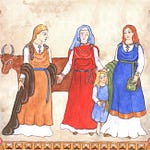
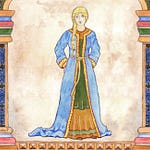
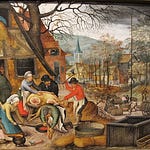
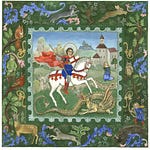



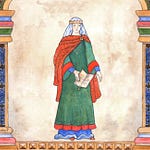
Share this post